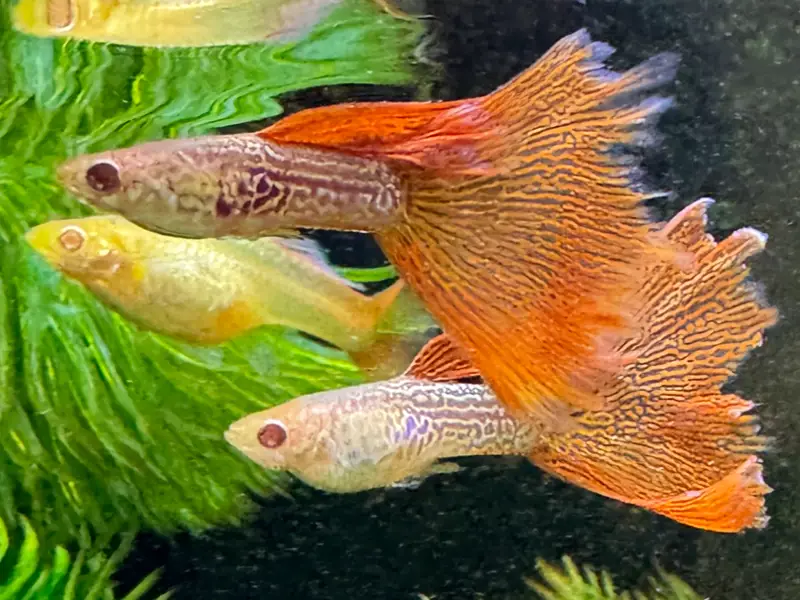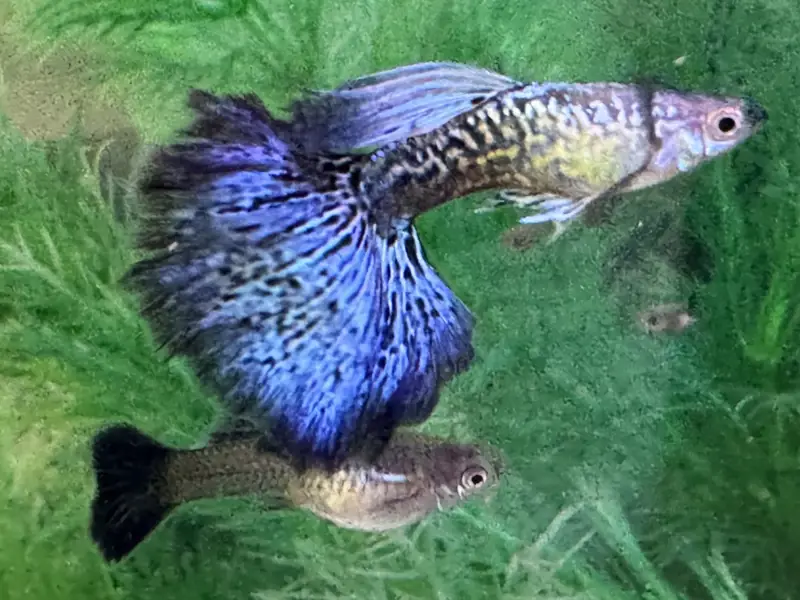Java Moss: Care, Planting, Types & More
Posted by on 03/01/2024
Whether you're a beginner or an experienced hobbyist, Java Moss is a unique aquatic plant that can add a pop of color to any tank. However, not every hobbyist is a fan of the plant, and many consider it to be a nuisance!
In this post, we'll cover all there is to know about Java Moss, and we'll dig a bit deeper into why this plant is either loved or hated by planted tank hobbyists.
January's Giveaways on Light Fish
Species Summary
Java Moss (scientific name: Taxiphyllum barbieri) is a slow-growing moss categorized under the Hypnaceae family of mosses. Plants in this category were some of the earliest plants to evolve, and are considered to be non-vascular, a trait shared by algae, liverworts, and hornworts.
The plant is native to Asia, specifically Vietnam, and there is some confusion surrounding the plant. A similar-looking species, known as Vesicularia dubyana, used to be referred to as Java Moss in the 1970s. It wasn't until the early 2000s, that Taxiphyllum barbieri received the common name, Java Moss, while Vesicularia dubyana is now known as Singapore Moss. Still - it's not uncommon to see either plant referred to as Java Moss.
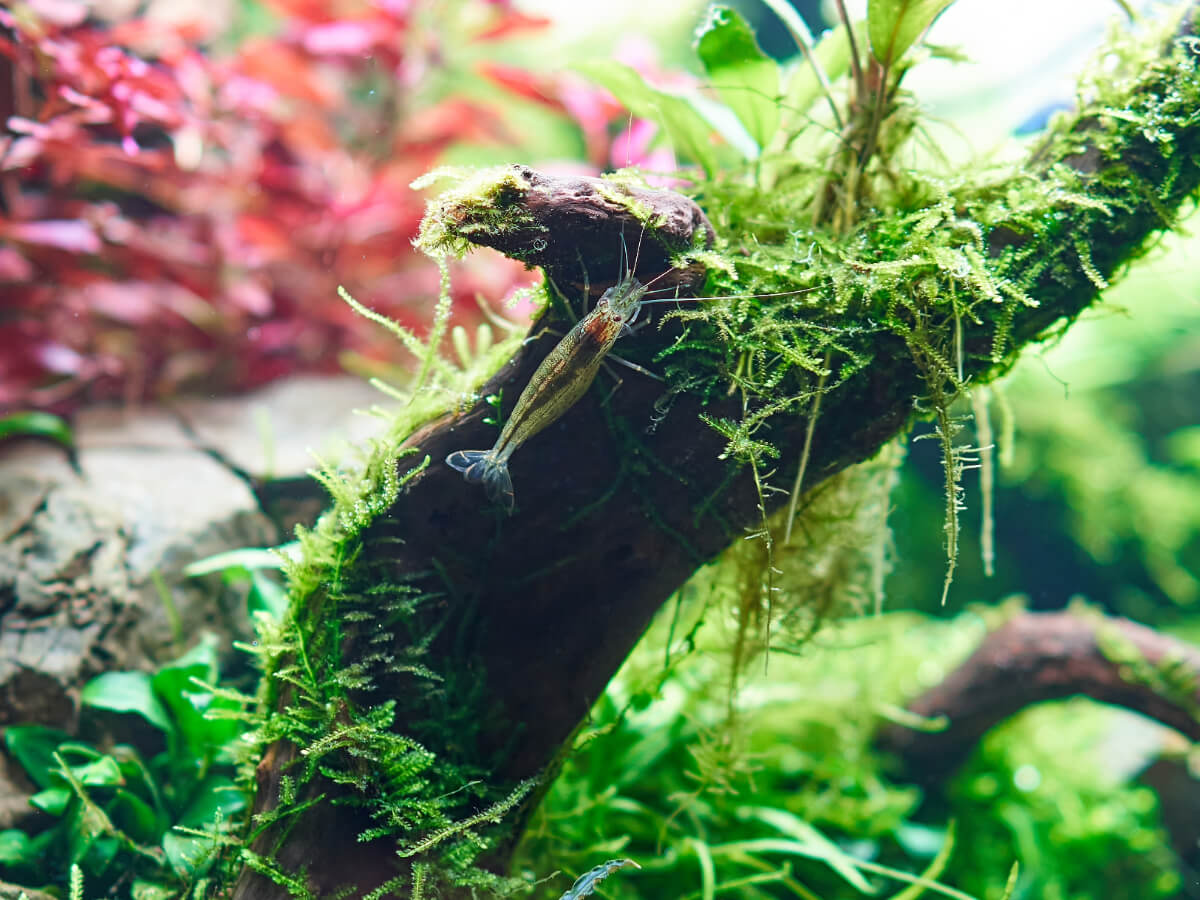
Appearance
Java Moss is a dark-green colored moss plant, which has small brown-colored rhizoids, not to be confused with rhizomes. These rhizoids are primarily used for anchoring the plant in place but also absorb nutrients and water to help sustain the plant. Java Moss grows horizontally, where tiny leaves extend from stems that grow outwards from the base of the plant. Over time, and with frequent trimming, the plant will clump up, and is capable of completely covering an aquarium's foreground, or hardscape pieces such as driftwood or seiryu stones.
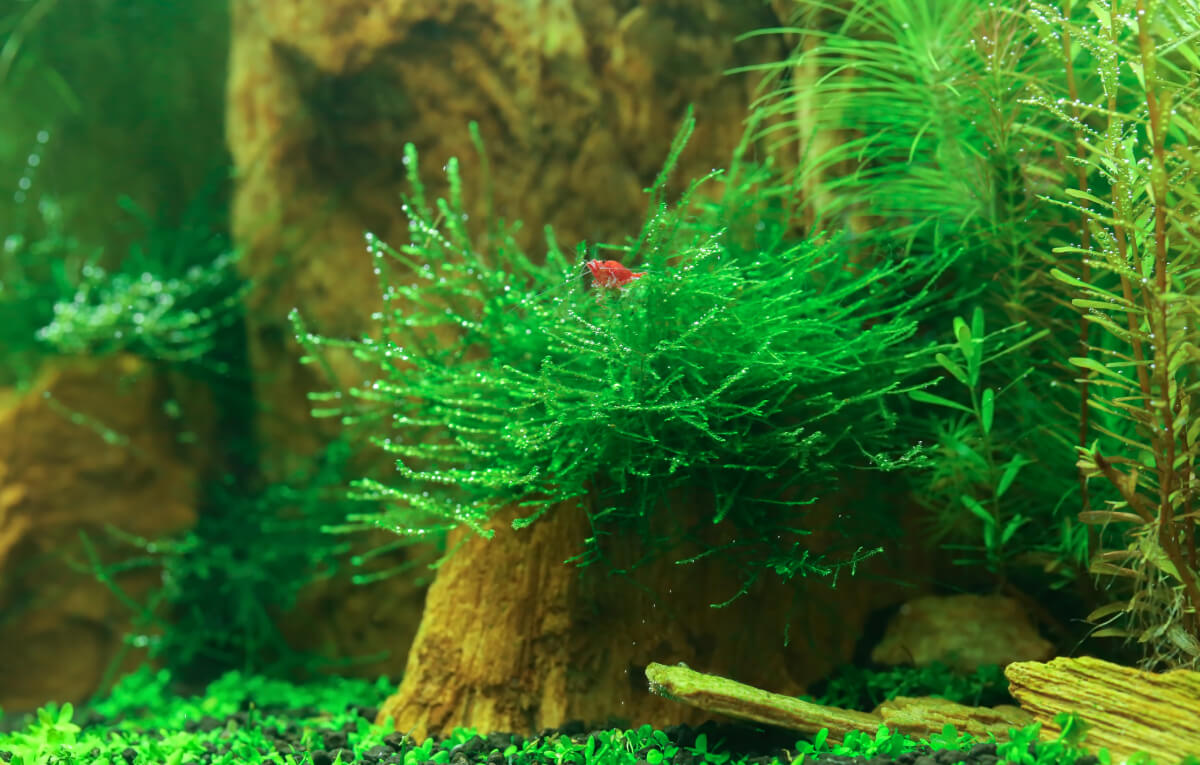
Flame Moss vs Java Moss
Relatively new to the aquarium hobby, is another similar aquatic plant known as Flame Moss (scientific name: Taxiphyllum sp. 'Flame Moss'). This plant, while similar to Java Moss, is unique in that the plant grows vertically, resembling a flame.
We cover the differences between these two plants, in our related blog post: Flame Moss vs Java Moss: Similarities, Differences & Design Ideas.
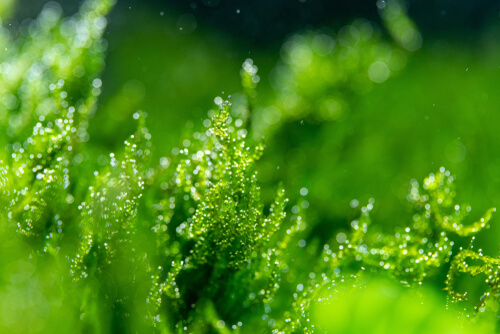
Size & Growth Rate
When provided with a steady supply of light and nutrients, Java Moss can easily take over an entire tank. Its ability to grow in virtually any environment with light makes certain hobbyists consider the plant a nuisance. If left unchecked, the plant can easily start growing alongside other carpeting plants, such as dwarf hairgrass or dwarf baby tears. While some hobbyists won't mind a jungle-like appearance in their tanks, others might go crazy trying to pull out each individual piece of Java Moss!
Typically, the plant's growth rate will depend on the light intensity and nutrients available in your tank. Strong lighting and an ample supply of nutrients will result in the fastest growth. In a low-light environment, Java Moss may take 1-2 months just to grow a few inches.
Java Moss Care
Caring for Java Moss is as easy as it gets. The plant is incredibly adaptable and hobbyists should face little issues keeping this plant alive. Still, it's important to know some of the minimum requirements for keeping such a versatile plant.
Tank Size
The nice part about Java Moss is that you can grow the plant in virtually any tank. Java Moss can even be grown in terrariums above the water line! Whether your tank is small or larger, any option is suitable for growing Java Moss.
Water Parameters
Java Moss is native to Southeast Asia, where the climate is considered tropical. You'll want to recreate the plant's native habitat as closely as possible.
The following parameters should serve as a guideline for caring for the plant:
- Temperature: 70°F-80°F
- GH: 2-20 dGH
- pH levels: 5.0-8.0
Fertilization
In a low-light aquarium, this plant is capable of growing via fish waste and nutrient-rich substrates as its primary source of nutrition. Growth rates will be slow, but leaves should appear healthy.
If you're considering Java Moss as a carpeting plant, or perhaps you want the plant to cover a piece of hardscape, you may wish to increase the plant's growth rate. Higher light and fertilization are key, and we recommend a liquid solution such as Seachem's Flourish. Dose the recommended amount of liquid solution for your tank size, combined with 50% weekly water changes.
Substrate
Virtually any substrate will work for Java Moss, as its rhizoids will attach to pretty much anything, but we still recommend a nutrient-rich substrate, such as flourite or eco-complete.
These substrates will serve as a nutrient source for your aquatic plants. Over time, the amount of available nutrients will diminish from these substrates, but they can create a nice "nutrient buffer zone" until they're used up (typically after a few months.)
Lighting
Java Moss is capable of growing via any aquarium-safe light. The plant doesn't require much in terms of intensity, but brighter lights will result in faster growth rates.
Don't worry if you've planted Java Moss in a dimly lit area of the tank, as long as your tank isn't pitch black, this plant is capable of growing!
Planting Techniques
Hobbyists looking to plant Java Moss can use a similar approach as rhizome-based plants (such as the Java Fern). An aquarium-safe glue or fishing line can be used to tie Java Moss to a section of the tank. Over time, the plant's rhizoids will attach to whatever they can, anchoring the plant.
If you're looking to carpet your aquarium with this plant, you can place a portion of the plant under the substrate so that it doesn't float. While the covered portion will die off, the rest of the plant will attach to the gravel and begin to spread.
Trimming & Propagation
Java Moss may very well be the easiest plant to trim and propagate. Cut the plant wherever you'd like and re-plant the cut portion! The original plant will continue to grow, making propagation a breeze.
Just be sure that any cut pieces don't float away! Otherwise, you'll have Java Moss growing in random parts of your tank (but for some folks, the more Java Moss, the better!)
Tank Mates
Except for larger, aggressive fish, such as African cichlids, Java Moss is a great addition to a tank filled with nano-sized fish. We love the plant for breeders, particularly those interested in breeding freshwater shrimp, as the moss can provide plenty of coverage for baby shrimp! Due to the size and shape of Java Moss's leaves, the plant can easily trap sinking pellets, keeping them in place for your inverts or fish to snack upon!
Conclusion
That wraps up our guide on Java Moss. Now that you've learned the ins and outs of the plant, do you think you'll add the species to your tank? Most people fall into 1 of 2 camps, hobbyists looking for an easy-to-care-for plant love Java Moss's growth and versatility, but advanced hobbyists may balk at the idea of moss covering their well-aquascaped tanks.
Let us know what you think in the comments, and be sure to visit our marketplace where you can find this plant for sale by hobbyists just like yourself!
January's Giveaways on Light Fish
